Celebrating Black History
Page Navigation
- Overview
-
Trailblazers & Changemakers
- Names A-L
-
Names M-Z
- Luther R. Manus, Jr.
- Jeanine McCreary
- Deanna McFarland
- Angela McNair
- Larry Meredith
- James Murfree
- Gregory L. Myers
- Ken Nickson Jr.
- LaShawna Page
- Lori Pickens
- Scherry Prater
- Shannon Pulliam
- Mazie Smith Purdue
- Tom Robinson
- Zakaria Sharif
- Harold C. Shields
- Chandra Slocum
- Maurice "Mo" Troop
- Dr. Leatra B. Tate
- Eva Tucker
- Nathaniel Turner
- Bruce Morton Wright
- Black History Month 2025: What Our Students Are Learning
- Black History Month 2024: What Our Students Learned
- Black History Month 2023: What Our Students Learned
- Black History Month 2022: What Our Students Learned
- Black History Month Resources
- Our Commitment to Diversity, Equity and Inclusion
- Celebrating Black History All Year
- Erie's Public Schools
- Black History Month 2025: What Our Students Are Learning
- Feb. 10-14: Science, Technology, Engineering and Math
-

Throughout the month of February, students across the district will be learning about the achievements, contributions and efforts of African Americans to the fields of language and literature, STEM (science, technology, engineering and math), arts and music, and social studies and political science. This second week, Feb. 10-14, we're focusing on STEM.
Strong Vincent Middle School
In Ms. Hendricksen's STEM classes, each class is making a project based on a famous scientist. The Integrated class is working on George Washington Carver. To help the students understand him better, they are working in groups making farms/gardens to help represent the impact that Carver had on agriculture.In recognition of Black History Month, our 7th grade science students are starting research projects on black pioneers in the Science, Technology, Engineering, and Math (STEM) field. Students are given a week to research their chosen STEM pioneer before they give a presentation on that person at the end of the week. Each presentation will be 3-5 minutes and cover the life, contributions to the field, and legacy of their chosen pioneer.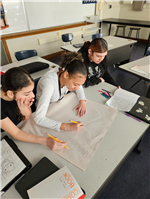
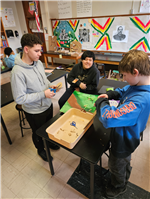
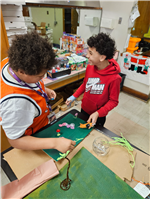
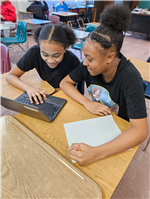 Edison Elementary SchoolThis week, grade 5 students shared conversation/learning about NASA scientists/mathematicians Katherine Johnson, Dorothy Vaughn, and Mary Jackson and their work behind the scenes to support astronauts and space exploration. The graphic shows the interconnectedness of the women and their connection to John Glenn as he was sent into orbit.
Edison Elementary SchoolThis week, grade 5 students shared conversation/learning about NASA scientists/mathematicians Katherine Johnson, Dorothy Vaughn, and Mary Jackson and their work behind the scenes to support astronauts and space exploration. The graphic shows the interconnectedness of the women and their connection to John Glenn as he was sent into orbit.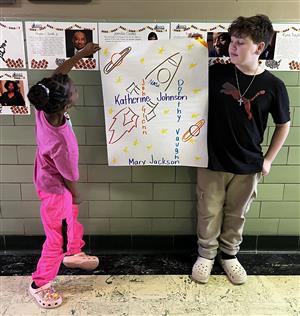 Wilson Middle SchoolStudents in Ms. Swigonski's eighth grade class researched famous Black contributors to the fields of science, technology, engineering and math, and made classwide presentations.
Wilson Middle SchoolStudents in Ms. Swigonski's eighth grade class researched famous Black contributors to the fields of science, technology, engineering and math, and made classwide presentations.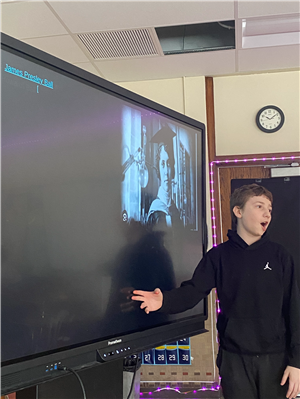
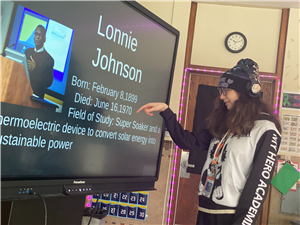
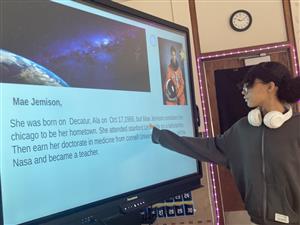 Lincoln Elementary SchoolMs. Huey's kindergarten class learned about Mae Jemison and her impact as the first Black woman to go to space.
Lincoln Elementary SchoolMs. Huey's kindergarten class learned about Mae Jemison and her impact as the first Black woman to go to space.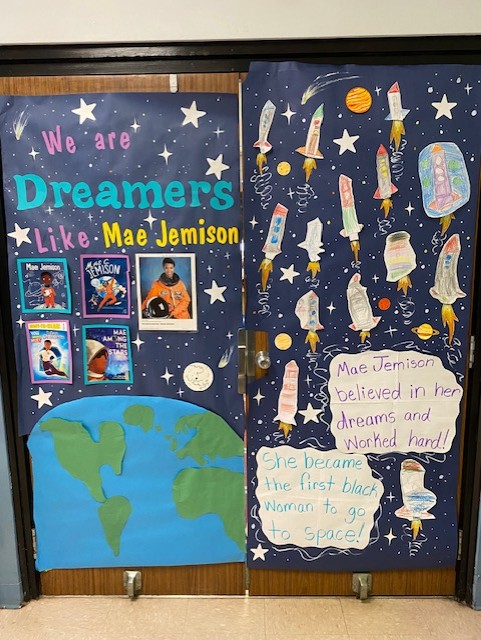 JoAnna Connell Elementary SchoolMs. Millet's students discussed influential women that made space travel possible. First, they read "Hidden Figures," the story of how Katherine Johnson, Dorothy Vaughan and Mary Jackson helped launch John Glenn into orbit, and then worked on a coding challenge: Students learned to directionally code astronauts to the moon using arrows on a grid. They, they worked together to use the Sphero robots to code them on a larger scale on the carpet, being careful to avoid objects, calibrate the robots correctly, and accomplish the mission of making it to the moon.
JoAnna Connell Elementary SchoolMs. Millet's students discussed influential women that made space travel possible. First, they read "Hidden Figures," the story of how Katherine Johnson, Dorothy Vaughan and Mary Jackson helped launch John Glenn into orbit, and then worked on a coding challenge: Students learned to directionally code astronauts to the moon using arrows on a grid. They, they worked together to use the Sphero robots to code them on a larger scale on the carpet, being careful to avoid objects, calibrate the robots correctly, and accomplish the mission of making it to the moon.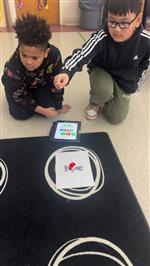
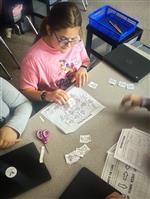
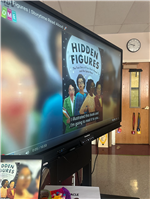
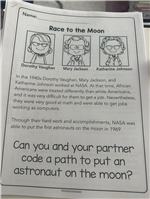 Erie High SchoolMs. Till's students will be learning about Marie Maynard Daly, the first African American woman to earn a Ph.D. in chemistry.
Erie High SchoolMs. Till's students will be learning about Marie Maynard Daly, the first African American woman to earn a Ph.D. in chemistry.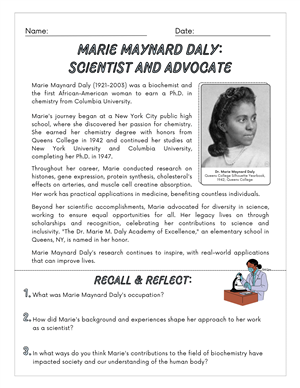 Pfeiffer-Burleigh Elementary School
Pfeiffer-Burleigh Elementary School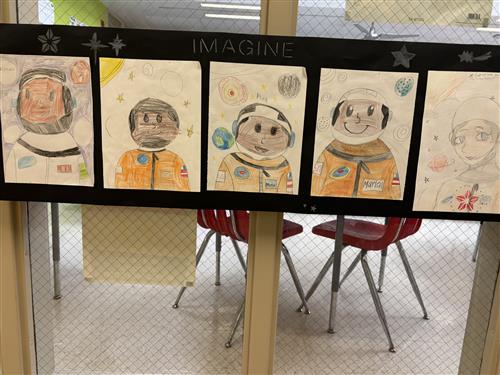 Fifth grade students learned about Mae Jemison, the first African-American woman in space. They gathered facts and then drew pictures to represent her historic contribution.Harding Elementary SchoolAstronauts were also on the minds of Harding kindergartners, who learned about Ron McNair, and first-graders, who also learned about Mae Jemison.
Fifth grade students learned about Mae Jemison, the first African-American woman in space. They gathered facts and then drew pictures to represent her historic contribution.Harding Elementary SchoolAstronauts were also on the minds of Harding kindergartners, who learned about Ron McNair, and first-graders, who also learned about Mae Jemison.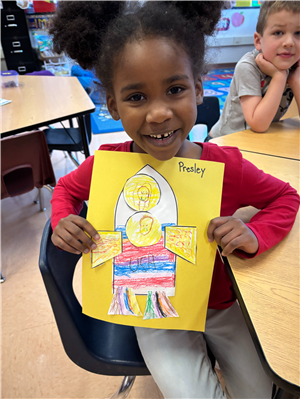
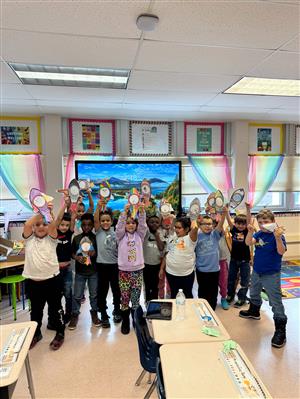 Northwest Pennsylvania Collegiate Academy
Northwest Pennsylvania Collegiate Academy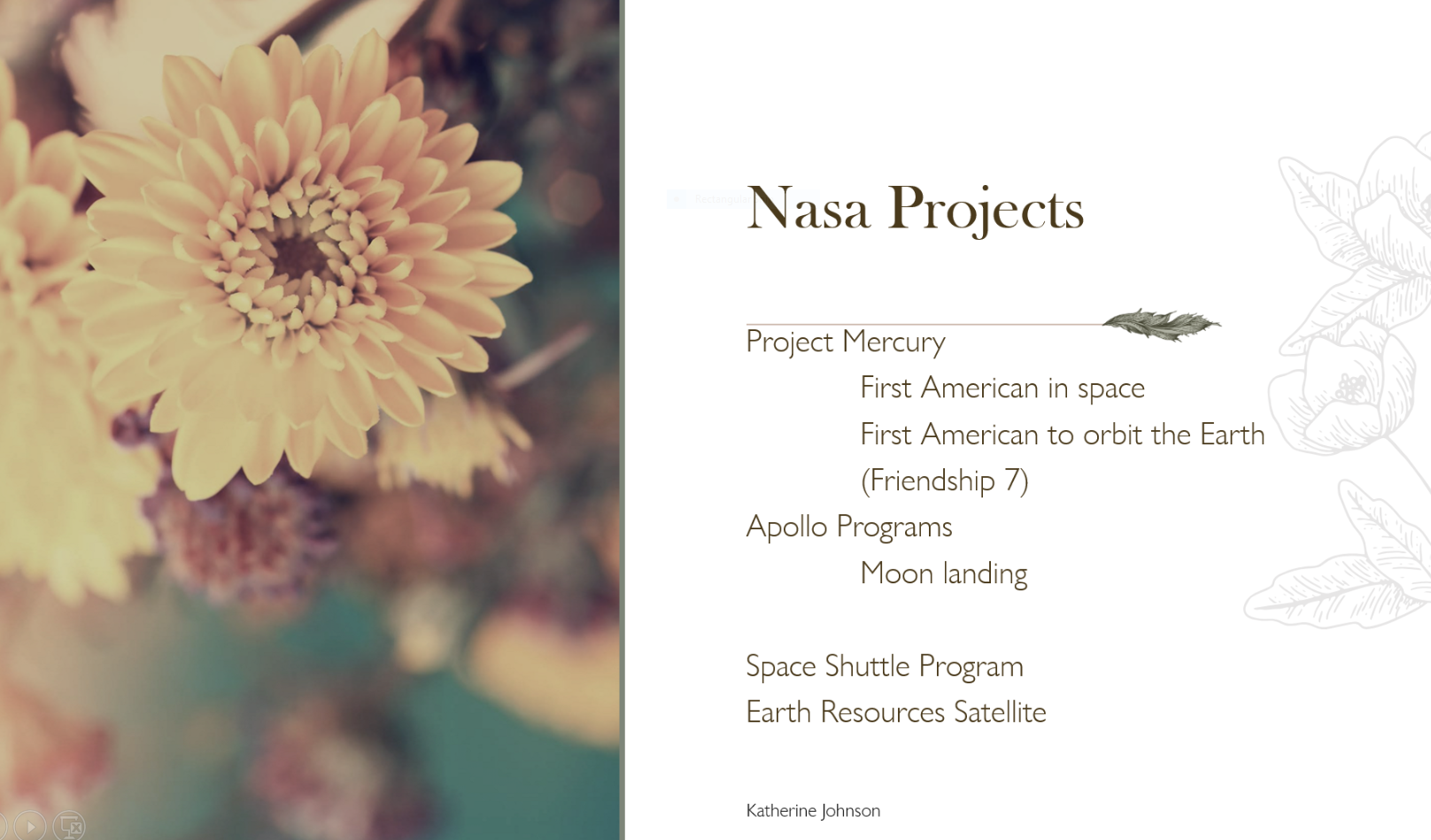 Students in Mr. Olszewski's class studied the three body problem while learning about NASA mathematician Katherine Johnson.The students had to figure out the mass of the Earth, moon and spaceship, and then the distance of the moon from the Earth and the gravitational constant. Using different time increments, students were able to see a visual of how far they are away from the moon and how the gravity from the Earth and the moon affected the spaceship's speed. These basic calculations allowed the class to see just how smart Katherine Johnson was, and how hard she worked to fitgure out those calculations by hand.Jefferson Elementary SchoolStudents explored the lives of influential African Americans who have made a significant impact in various fields such as sports, medicine, politics, science, math, and more. Each child selected a person of interest, read a brief summary about them, and then completed the STEM challenge on their challenge card. Using materials like paper, cardboard, and other recyclable items, students constructed their ideas and brought their projects to life, all while learning about the contributions of these remarkable individuals.
Students in Mr. Olszewski's class studied the three body problem while learning about NASA mathematician Katherine Johnson.The students had to figure out the mass of the Earth, moon and spaceship, and then the distance of the moon from the Earth and the gravitational constant. Using different time increments, students were able to see a visual of how far they are away from the moon and how the gravity from the Earth and the moon affected the spaceship's speed. These basic calculations allowed the class to see just how smart Katherine Johnson was, and how hard she worked to fitgure out those calculations by hand.Jefferson Elementary SchoolStudents explored the lives of influential African Americans who have made a significant impact in various fields such as sports, medicine, politics, science, math, and more. Each child selected a person of interest, read a brief summary about them, and then completed the STEM challenge on their challenge card. Using materials like paper, cardboard, and other recyclable items, students constructed their ideas and brought their projects to life, all while learning about the contributions of these remarkable individuals.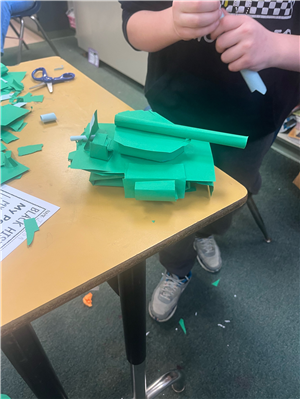
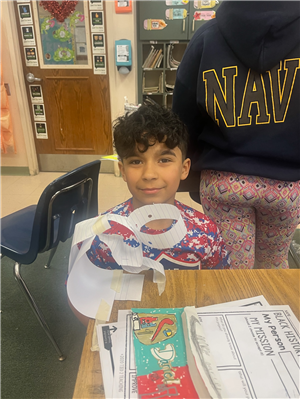 More student artifacts will be added throughout the week, so please check back frequently!
More student artifacts will be added throughout the week, so please check back frequently!

